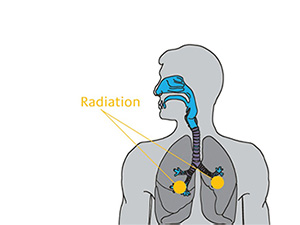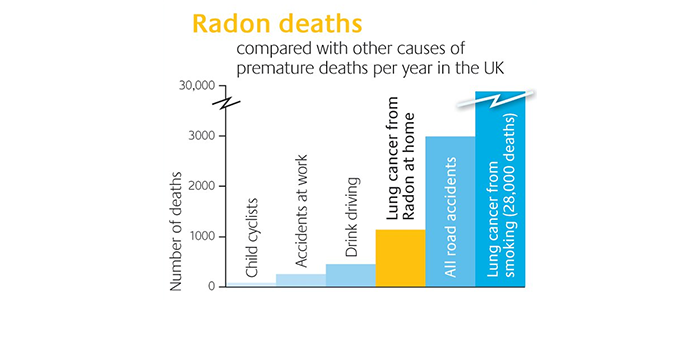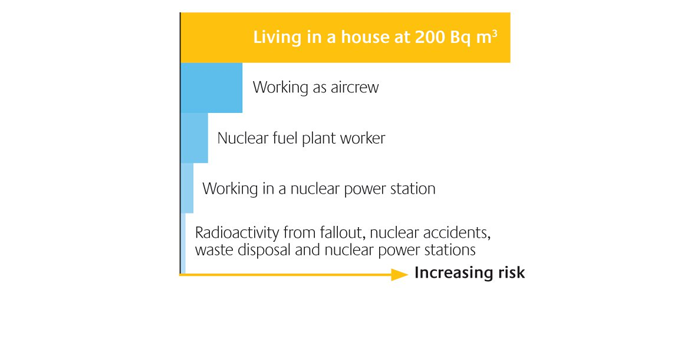The explanation
Radon produces a radioactive dust in the air we breathe. The dust is trapped in our airways and emits radiation that damages the inside of our lungs. This damage, like the damage caused by smoking, increases our risk of lung cancer.
What is the evidence?
A European study, funded by Cancer Research UK and the European Commission showed that radon in the home increases the risk of lung cancer1. An independent report, Radon and Public Health estimated that radon is a cause in over 1,100 lung cancer deaths each year in the UK2.
Radon risks: details
The life-time risk of lung cancer due to radon is greatest for smokers.
| Indoor radon level (Bq m-3) |
Non-smoker |
Ex-smoker gave up at age 30 |
Ex-smoker gave up at age 50 |
Current smoker |
| 20 |
Less than 1 in 200 |
1 in 60 |
1 in 18 |
1 in 7 |
| 200 |
1 in 190 |
1 in 48 |
1 in 14 |
1 in 5 |
| 800 |
1 in 100 |
1 in 28 |
1 in 8 |
1 in 3 |
Other radiation sources
Any radiation exposure carries a risk: the higher the exposure the higher the risk.
Risks other than lung cancer
It is mainly our lungs that are exposed to and damaged by radon. There is no consistent evidence that radon causes cancers elsewhere, or other harm.


